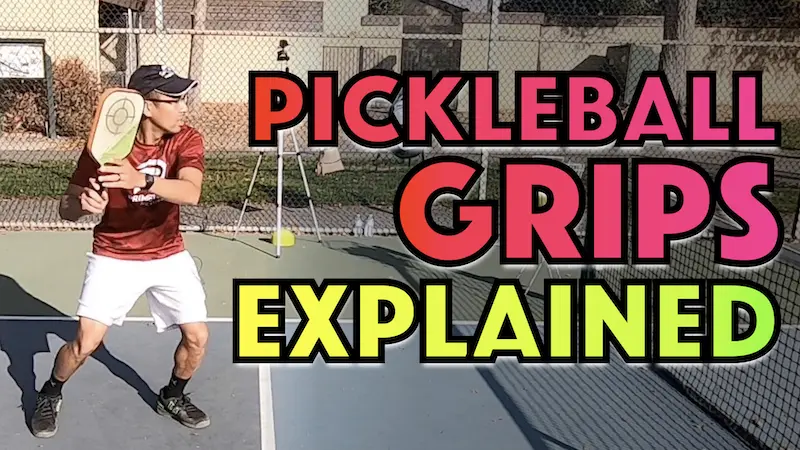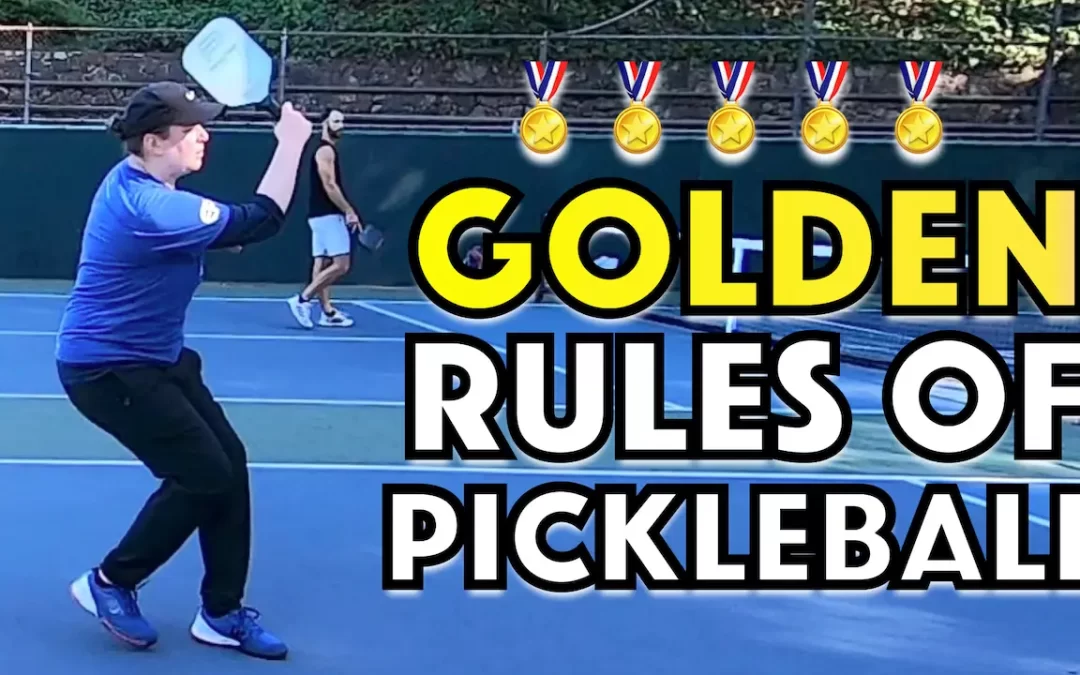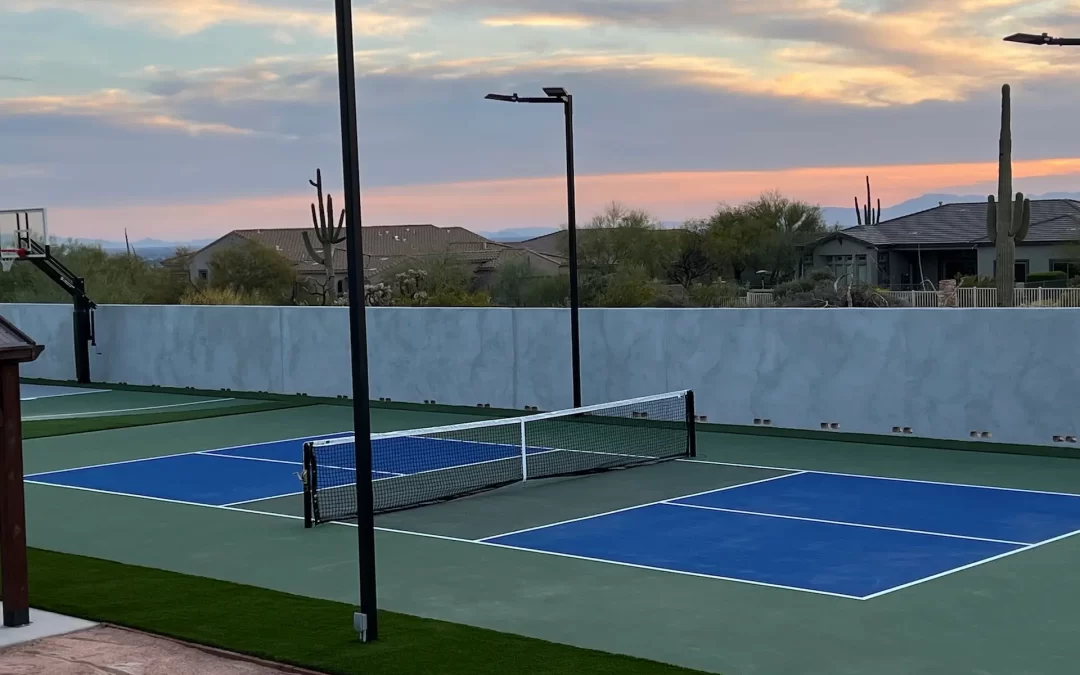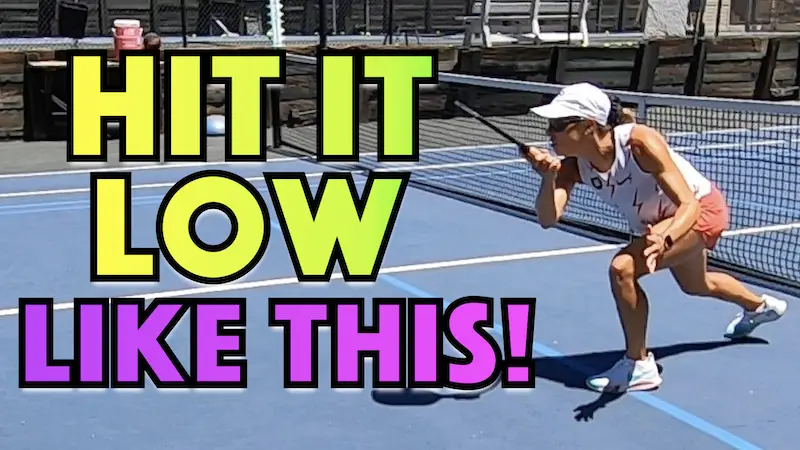Pickleball was invented and played on a badminton court in 1965. It is a cross between badminton, ping-pong, tennis, and is one of the fastest-growing sports.
Even though pickleball is a simple game, the scoring can be a little tricky to understand right away for beginners.
Not to worry, with a little guidance, and some key tips, we will teach you to make it easy to keep score.
Let’s get right into the tips and tricks on how to keep score in Pickleball with ease.
Ready?
The Game of Pickleball Basics
Whether you play Pickleball at the YMCA or some other recreation or community center, the rules are all the same.
The game is won by the first team or player to score 11 points by a margin of 2 points (ie.11-9, 12-10, etc).
As in tennis, badminton, and any other racquet-type game, the goal is to win the rally. In case you didn’t know, a rally is simply hitting the ball back and forth on a pickleball court after the serve and before a fault.
A key difference in scoring of Pickleball is that a point can only be scored by the serving team. So, a strong and reliable serve is essential for the serving team, and rallies are important for both the serving team and the receiving team.
Even though you cannot put a point on the scoreboard as the serving team, you can and must win back the right to serve if you hope to score points and win so receiving is also an extremely important aspect of the game.
A flip of the coin determines who serves first, and once the serving team is selected, the game quickly moves into action. Though rallies can be more extended than in tennis, time between points is kept to minimum so stay alert and be ready to play at a fast pace.
The first serve always starts on the right side of the court. The person serving announces the score; they can either let the ball bounce once, a drop serve, or throw it up and hit the ball which is know as a traditional serve. In either case, the ball must travel diagonally to the opposing receiver’s side.
One key point to understand is that the serve must also land beyond the non-volley zone (NVZ) line in the diagonal service court area.
The server must use an underarm swing with a contact point below the waist to hit the ball. The receiving team can return the ball anywhere in the court.
The serving team will score a point if the receiving team misses the ball.
Drop Serve For The Win
The drop serve was made legal in 2021 as a provisional rule and has since become a permanent rule. For the drop serve, the server can bounce the ball once and hit it with an underarm swing below the waist. The toss of the ball cannot be propelled/thrown either up or down. The server must simple hold out their arm to release the ball and not add any momentum to it for it to be a legal drop serve.
Many beginners find it easier to time a bounce serve as opposed to hitting it out of the air after the toss.
Keeping Score Basics
An easy scoring answer is that a Pickleball tournament game goes to eleven points, the winning team must lead by two points to win, and you can only score in Pickleball by serving. Typically, you must win two out of three games to eleven in order to win the match.
Doubles First Exception Rule – Pickleball Scoring Rules
Doubles in Pickleball will have four players, two on each team. As each person serves, the score of the game is announced.
The first player starts on the right side of the court and announces the score starting with the serving team’s score of 0,0,2. (Server Score, Receiver Score, Server Number)
What, why two?
The game had to be made fair, so they created the first server exception rule to make it that way.
First Server Exception Rule
This is a fundamental pickleball rule in doubles. It states that the first server of the Pickleball game will be the only player on that team to serve during that team’s first turn to serve.
The team that has the first service turn is the team that is designated as the first team to serve at the start of the game as was determined by the toss.
During the remaining turns to serve for each team after each sideout (term explained below), each player on the team will have the opportunity to serve.
This rule was created so that the serving team does not have a clear advantage, and it is not better to serve first.
It makes relatively no difference if a team starts serving first or second in the game. The first exception rule makes things fair.
Doubles Scoring Example
So, when the game starts, the first server says 0,0,2, which means; my team has zero points, your team has zero points, and I am the second server.
Once the rally is won or lost, it goes to the next serve.
If the serving team wins the rally – the first server moves to the left side of the court, their partner moves to the right and announces 1,0,2, which means my team has 1 point, the opposing team has zero points, and I am the second server.
Now pay attention, this is where Pickleball scoring may seem trickier.
The first server announces the score of 1,0,2 and starts the rally serving from the left side diagonally into opposing team’s left service area, and the opposing team hits the ball back, and the first server’s team misses the ball. The opportunity to serve now transfers to the receiving team to serve and hopefully win points so that they too can get on the scoreboard.
It is called a sideout.
Sideout: A side out has occurred, which means the ball will go to the opposing team, and they will start serving and have a chance to win points for their team.
The team that started out receiving is now serving – Again, the first server is the player on the right side of the court, but now he announces 0,1,1. This means my team’s has zero points, your team has 1 point, and I am the first server on my team during this service turn.
The server announces the score, then continues to serve until someone misses the ball. In this case, it was the server, so he has lost his turn to serve.
Remember, this is a team sport, so the other team member gets her chance to get some points, and the second server announces 0,1,2.
This means our score is zero points, your score is one point, and I am the second server on my team. This player continues serving until her team loses the rally at which point a sideout occurs.
In this scenario, it so happens the serving team on the point, the current serving team scores one point. They switch sides from left to right and the server announces 1,1,2 on her next serve and misses the serve. So, she scored one point before the sideout occurred.
Now it gets tricky again, though keep in mind the same principles continue to apply; the person starting the serve will be on the right side of the court, and they announce 1,1,1.
During our team’s turn to serve, at this time, our score is one, the opposing team also has one point, and I am the first server on my team during our turn to serve this time.
The point starts, and after a few hits back and forth, the serving team misses. No point scored, so the next server takes their turn and announces 1,1,2.
Our score is one, your score is one, and I am the second server.
This continues until a side out happens – the ball goes to the opposing team and rotates throughout the Pickleball game.
Example to Help You Remember the Pickleball Scoring Order
If you remember the phrase Me-You- Who, you will never forget how to announce the score when it is your turn to serve.
- Me – My score; you will always start by announcing your team’s score.
- You – The receiving team’s score is announced next.
- Who – Are you the first server or the second server?
If your partner just served, then you are the second server. If the opposing team has just finished serving, you are the first.
Moving Servers Throughout the Court for Beginner Players
The movement in the court can get confusing, so here is the complete explanation for that:
- In doubles, players on the serving side switch positions. Each time a point is scored, they move from left to right or right to left.
- The serving side does not move unless a point is scored. So, if they have lost the point and a sideout occurs at that time. They stay start on the same side from which they started the point that just ended.
- The players do not rotate sides when they are the receiving team until they are on the serving team and have scored a point.
- When there is a sideout, and the serve goes to the opposing side, the person who has been on the right while receiving during that team’s turn as the receiving team, that has now just ended, will be the first server.
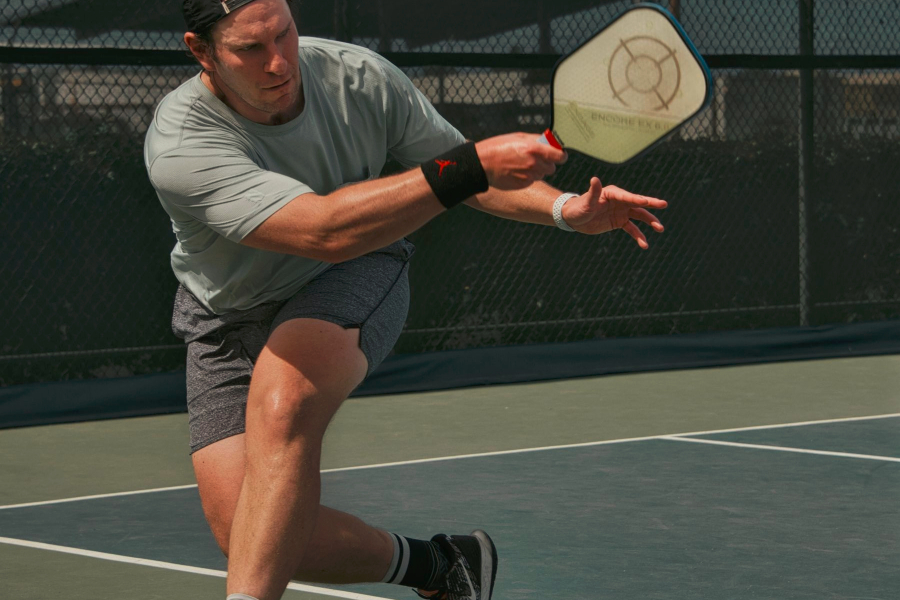
Another Example of Doubles Pickleball Scoring
Let’s set that stage for this example. We have an exciting doubles Pickleball tournament starting. These teams have approached the court.
It’s the gold medal match between Team A and Team B. They’ve faced off many times before and it’s always a hotly contested battle. They’re ready to start this final pickleball match that will decide the winner of the tournament and establish who gets bragging rights and prizes.
One player from each team approaches the net, and a coin is flipped; it is decided that Team B will be the starting team and serve.
The player on Team B that they’ve decided (amongst themselves) will serve first is on the court’s right and announces 0,0,2 (remember the First Server Exception). He hits a perfect serve, deep in the court and to the diagonal opposing player, the receiver, quickly returns it, and a rally begins.
Team B gets the opportunity for an Overhead Smash, an advanced Pickleball shot that is expertly struck and it pushes both players on the receiving team back into the court, the receiver misses the shot. A point for Team B.
The server moves to the left and announces 1,0,2 and again drops in a perfect serve.
The receiver hits it back, a heated rally ensues. Later in the point, Team B finds themselves at the net and Team A is well back in the court. Team B notices this and takes the opportunity to hit a drop volley just over the net and short in the kitchen. Team A is unable to run up in the court in time to make a play on the ball before it bounces twice.
Another point for Team B!
The server rotates to the right, and the other player on Team B (the current serving team) rotates to the left. He announces 2,0,2, and the game continues.
He serves the ball, but it is too short and low and lands in the net. Oops!
Server Fault | Serve Goes To Receiving Side Now (Sideout)
This is a sideout since the serving team commits a fault, so the serve goes to the receiving side.
The player from Team A on the right side of the court will serve. They announce 0,2,1 since their side has no points, Team B has 2 points and she is the first server.
She hits a perfect serve; the receiving side (Team B) misses the ball.
So, the server rotates to the left and the other team member to the right, and she announces the server score of 1,2,1. She is still the first server, and she just scored. Her team has 1 point, the receiving team has 2 points.
She serves the ball, and it lands wide (outside of the sideline and therefore out of bounds), so the serve will go to the other team member.
He starts his serve by announcing the current score of 1,2,2. They still have only one point, but he is the second server.
He has a power serve, another advanced pickleball shot, usually it’s very effective but unfortunately he puts a little too much on it and goes out of bounds passed the baseline and it is a sideout.
He remains on the court’s right, and the serve will return to Team B with both team members having the opportunity to serve.
Match Commentator Update: Team A has just blown their chance to score any points on their turn to serve this time. Not good! They’d better pull things together as the gold medal may slip away quickly if they don’t.
The game continues until a team reaches 11 points with a two-point lead. The team that wins two out of three 11-pint games wins the tournament.
Spoiler Alert! Team A loses game #1 due to their poor serving but pull it together for game #2 and #3, making very few mistakes and ultimately win the tournament.
Fundamental Principles to this Example
- Team B started the game, so the first server rule applies, and he started by announcing 0,0,2.
- Serving moves to the player on the opposing side on the right, each time a sideout is reached.
- After the first sideout, each player will have a chance to serve before the next sideout occurs.
- Each person serving announces the score using Me-You-Who or my score, your score, and server number.
Keeping Track Of The Correct Side
An easy way to ensure you are in the correct position is remembering the side you started the game on. Regardless of if you started serving or returning… what side were you on when the game started? Even (right) or Odd (left)?
If your team’s score (points your team has in the game) is even you should be on the side where you started the game. If your team’s score is odd then you should be on the other side from which you started the game.
If it is not that way, you either mixed up your scorekeeping or forgot to move when a point was scored.
Scoring in Singles Pickleball | What’s the Difference?
The score in Singles Pickleball is very similar to doubles. The key differences between singles scoring and doubles is the position that players are serving from on the court and that no server number needs to be called because there is only one server on each side.
The position is based on scoring and how the singles Pickleball player will announce the score.
- Each player will only announce the server’s score followed by the receiver’s score when announcing the score.
- The serve will always be on the right court if the server’s score is an even number and from the left if the server’s score is an odd number.
Final Thoughts On Scoring
We have learned a lot about Pickleball scoring. A few key takeaways are:
- In doubles, The First Server Exception rule makes it so there is no advantage in serving first.
- You can bounce the ball before you serve in Pickleball, making it easier for the beginner to serve.
- A match is usually won by the player or team that wins 2 out of 3 games to 11 points (win by 2 points).
- In doubles, you call out 3 numbers before each serve: your team’s score, the other team’s score, the server number.
- In singles, you call out 2 numbers before each serve: the server’s score followed by the receiver’s score.
Now that you know how to score, get out their and enjoy the game with your new Pickleball friends.
Have fun, and get the exercise you want in an action-packed game of Pickleball.
If you would like additional information on official Pickleball rules, visit the official USA Pickleball website.


